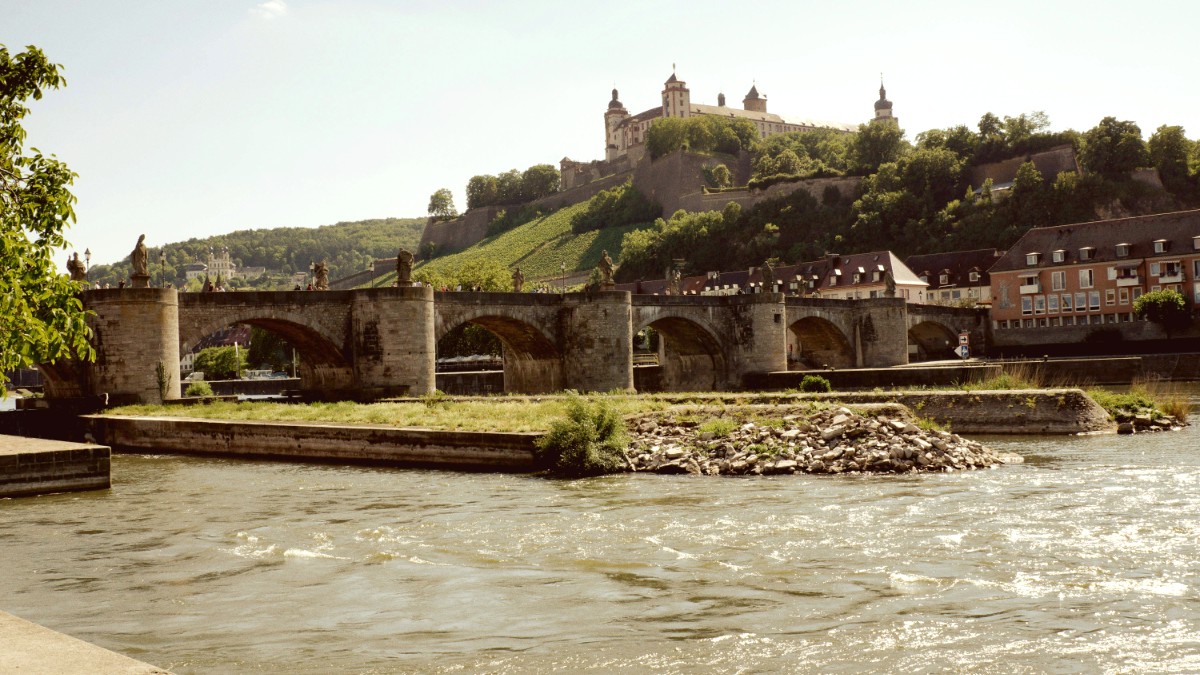
Bavaria, Germany
The Würzburg Residence, an UNESCO World Heritage site, is one of Europe's most magnificent Baroque palaces. Prince-Bishop Johann Philipp Franz von Schönborn commissioned its construction between 1720 and 1744. Balthasar Neumann led its design, collaborating with prominent artists like Giovanni Battista Tiepolo, who painted the famous ceiling frescoes. This palace served as the seat of the prince-bishops after their relocation from Marienberg Fortress. It represents the zenith of Baroque artistry and political power in the region.
Marienberg Fortress, a dominant hilltop fortress, overlooks Würzburg. Its history dates back to Celtic times, evolving from a prehistoric refuge to a Roman settlement, then a medieval castle, and finally a formidable fortress. It served as the residence of the Würzburg prince-bishops for centuries prior to their move to the Residence. The fortress presents a layered journey through Würzburg’s history.
A guidebook like Fodor's Essential Germany can provide more context.
Baroque pilgrimage church by Balthasar Neumann. Offers spectacular city views. A Way of the Cross leads up to the church.
Adjacent to the Cathedral, built over St. Kilian's grave. Features a Baroque façade and peaceful Lusamgärtlein courtyard.
Wander through the Altstadt's narrow streets for a glimpse into medieval charm.
Located within Marienberg Fortress. Explore the historic living spaces of the former rulers.
A remarkably deep well within Marienberg Fortress, ensuring water supply during sieges.
Würzburg's green spaces and river present opportunities for relaxation and scenic enjoyment.
Expansive Baroque garden around the Würzburg Residence. Elegant pathways, hedges, fountains, and sculptures. Perfect for strolls or picnics. Free entry.
A green belt encircling the inner city, created on former city fortifications. Pleasant walking paths, mature trees, and monuments. An urban oasis for quiet escape.
Hills around Würzburg are covered with vineyards. Marked walking trails offer scenic routes with panoramic views of the city and Main River. Often lead to Weinstuben.
The Main River serves as a beautiful natural attraction, offering various recreational options.
Discover Würzburg's lesser-known treasures for a more authentic experience.
These spots, while perhaps not prominently featured in all guides, hold a special charm and offer unique insights into the city's character and heritage.
Explore Würzburg's renowned wine culture at its source.
Another significant wine estate with a rich history.
Take time to appreciate the intricate beauty often overlooked.
Find peaceful spots away from the main tourist paths.
Residence and Fortress museum hours vary seasonally (e.g., April-October: 9:00 AM - 6:00 PM; Nov-Mar: 10:00 AM - 4:30 PM). Both close Mondays.
Admission fees apply for Residence interior, Mainfränkisches Museum, and Fürstenbau. Fortress grounds and Old Main Bridge are free.
The Residence has some accessible areas. Marienberg Fortress has uneven terrain. Public transport can assist.
Audio guides are available in multiple languages at the Residence, providing detailed information about each room.
Explore audio guide availabilityGuided tours with live guides are offered at specific times for both the Residence and the Fortress.
Book a guided tourLocal tour operators offer guided walking tours of the Altstadt, covering historical sites.
Find walking toursMain-Schifffahrt runs scenic river cruises that highlight Würzburg's riverside attractions.
Discover river cruisesFor a personalized experience, arrange private tours focusing on specific interests like wine or Baroque art.
Arrange private toursTo maximize your time, plan attractions in advance.
Timing your visit can influence crowd levels and photographic opportunities.
Many museums and attractions are closed on Mondays in Germany.
Check official websites for the most up-to-date opening hours and special events before your visit.
Beyond the main highlights, Würzburg has other local points of interest that enhance your visit.
As an university city, Würzburg has a lively student population. The university buildings, especially the main building, feature impressive architecture.
This historic building with its distinct tower is part of the Old Town Hall complex, a blend of medieval and Renaissance architecture.
A complex of buildings reflecting different architectural eras, from medieval to Renaissance.
A good starting point for exploring the city center.
This museum inside a Baroque palace presents local and regional art and cultural history, often with changing exhibitions.
Check current exhibitions for specific interests.
The building serves as the Catholic educational and cultural center for the Diocese of Würzburg.
A modern cultural hub with a rich spiritual background.
A residential district south of the Altstadt, offering local shops and cafes away from tourist crowds.
Located across the Main River, this area has a mix of housing and some industrial heritage, with views of the fortress.
East of the city center, a quieter neighborhood with some beautiful old villas and the university botanical garden.